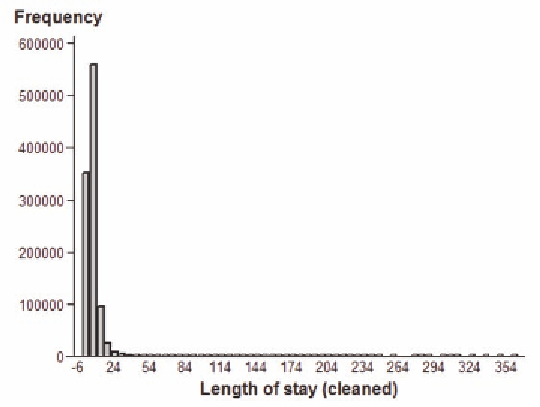Information Technology Reference
In-Depth Information
Figure 1. Length of hospital stay for patients with diabetes
In this chapter, we look at bar graphs of patient length of stay. As will be clearly demonstrated, these
distributions are not normally distributed. Therefore, we will need some way to model these patient
distributions. We will show a method, called kernel density estimation, that makes no assumption about
the shape of the underlying population distribution; instead, it provides a way to define a model that can
be used to examine the entire population instead of just its average.
Probability is usually defined in terms of a density function. The most common such density func-
tion is the bell-shaped curve. The Probability that a value x is less than some pre-determined value, X
(P(x≤X)=C), is equal to the integral between -∞ and the value X of the density function. In the past,
tables were provided with the integral value of the standard normal density function. More recently, most
statistical or graphing calculators provide the values as more and more mathematical tables are no longer
printed. A brief summary of kernel density estimation is available online.(Anonymous-kde, 2008)
Kernel density estimation follows the same principal as integral calculus. The area under a curve
can be estimated using a series of rectangles, with the total area assumed to be the sum of the areas of
the rectangles. As the width of the rectangles becomes smaller, the sum of the rectangles comes closer
and closer to the actual area under the curve. As the width of the rectangles approaches zero, the sum of
rectangles approaches the area. There are a number of calculus formulas available that can be used to
estimate the area under the curve. The simplest, but still relatively effective method is known as Simp-
son's Rule.(Anonymous-simpson, 2008)
Background
Bar graphs of Population distributions
We start with Figure 1, the bar graph of the hospital length of stay for all patients with diabetes. In the
National Inpatient Sample, that includes just over 1 million patient stays. Note that the distribution has

Search WWH ::

Custom Search